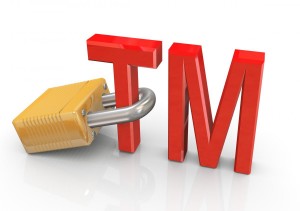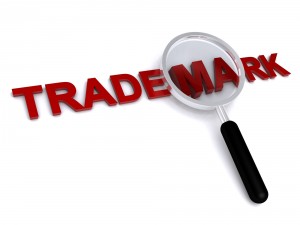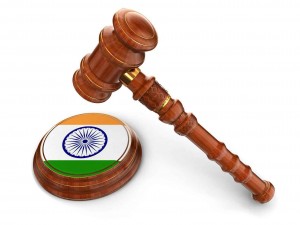In this blog post, Pramit Bhattacharya, Student, Damodaram Sanjivayya National Law University and Himanshu Mahamuni, a student of Government Law College, Mumbai, write about unconventional trademarks. The law in India regarding unconventional trademarks has also been discussed in this post.
Table of Contents
Introduction
Whenever we are talking about trademarks, whether conventional or unconventional, the concept of Intellectual Property Rights (IPR) comes in. IPR gives the ownership rights right to a person, who has created any creative or innovative product, to own innovation or creative idea in the same manner as any other physical product.[1] Trademark, like copyrights and patents, is one of the parts of IPR laws, and its function is to protect the “mark” of the product or the service. So, a trademark can be defined as any mark which can be represented which can be represented in some form and can distinguish the product or service which it is representing. A trademark can be any particular color, any particular shape, name, shape, signature, sound, etc.[2] 
In recent times, the field of IPR has seen a lot of development, especially with regards to trademarks. The TRIPS agreement recognizes various kinds of trademarks. India has also made necessary changes in its laws to comply with the provisions of the TRIPS agreement. There are certain kinds of unconventional trademarks which are beyond the current regime of trademark laws, both at the international and the local level. So it becomes important to know how these unconventional trademarks are recognized.
It is noteworthy that trademark laws in India have always kept its pace with the ever changing times.[3] The current trademark law in India is the third one and is in full compliance with the international standards. The legislature has been working constantly to create laws which are in compliance with the globally accepted TRIPS Agreement. 
Every day, new technology is being developed. New products are being created and sold. Nowadays, even the way to advertise the products has also changed. With the growing competition in the economy due to globalization and liberalization policy, the selling power of a brand is no longer limited to the quality of products. It also depends on how much people recognize a product, and how much customer base can a product create through its mark. Apart from marks, jingles, songs or stories which are related to the product can also create recognition of a product or a brand among its customers.[4]
In India, the earliest law relating to trademarks was the Trade and Merchandise Act, 1958. It was later replaced by the Trademarks Act, 1999, through which the law relating to trademarks was amended and consolidated. The introduction of the new Act was considered necessary by the legislature so that India could comply with the Trade-Related Aspects of Intellectual Property Rights (TRIPS) Agreement and to meet its obligation as the member of the World Trade Organization. Going by the old act, unconventional trademarks like any particular sound, color scheme, etc. couldn’t be registered.
Both, international treaties and national laws aim to provide a wide definition for the word trademark. According to Article 15 (1) of TRIPS[5] The agreement, Trademark means any sign or combination of signs which can distinguish the product from any other product. For instance, registration of sound as a trademark is very common in the US and the European Countries.
The Indian Legislature and the Judiciary have adopted a developing approach towards the Trade Mark laws and hence the position in India is not yet concrete. The Indian Judiciary is taking guidance from precedents where the matter is settled to develop its law.
NICE classification of trademarks
India follows the NICE classification of Goods and Services put forth by the World Intellectual Property Organization (WIPO). NICE classification has 86 signatories to it which makes it globally recognized and acceptable. Under NICE products can be trademarked into 45 classes; 34 classes (1-34) of goods and 11 classes (35-45) of services.
The Trademarks can be broadly classified into five categories–
- Generic – These are general names depicting the name of the product itself;
- Descriptive – As the name suggests the mark describes the characteristics of the products;
- Suggestive – This mark proposes a mark which is suggesting the characteristics of the product;
- Arbitrary – Here the mark exists in popular vocabulary but has no logical relationship with the product;
- Invented/Coined – These marks are unique and new words that have no dictionary meaning.
The invented/coined and arbitrary marks are the strongest and easiest to protect e.g. Adidas and Apple respectively. These marks cannot be misinterpreted or prejudiced as other meanings. The generic names are considered to be the weakest which can never function as a trademark. Recently in February 2021, Intellectual Property Appellate Board (IPAB) issued an interim stay order of registration of the trademark of the word ‘N95’ on the ground that it is a generic word.
What are Unconventional Trademarks?
When talking about trademarks, traditionally trademarks can be defined as any mark which is unique to the product and was identified with the origin of the product. An unconventional trademark is a new type of trademark which does not fall into the category of conventional or traditional trademarks. These trademarks fulfill the conditions of being a trademark but are difficult to register because of their unusual nature.[6]
 In recent years, the registering authorities have faced many challenges due to the number of trademarks brought forth for being registered. These unconventional trademarks included texture, shape, scent, outline, body movement, and even Tarzan’s yell.[7] This rise in the number of unconventional trademarks can be attributed to the non-concrete legal definition provided for a trademark. On one hand, trademark laws emphasize on having an open definition for the term, where the function of the mark is given primary importance.[8] Any mark which fulfills the commercial function of differentiating the said product from other products can be registered as a trademark. On the other hand, the development of the law relating to a trademark has been in a way which gave more preference to traditional and conventional marks.
In recent years, the registering authorities have faced many challenges due to the number of trademarks brought forth for being registered. These unconventional trademarks included texture, shape, scent, outline, body movement, and even Tarzan’s yell.[7] This rise in the number of unconventional trademarks can be attributed to the non-concrete legal definition provided for a trademark. On one hand, trademark laws emphasize on having an open definition for the term, where the function of the mark is given primary importance.[8] Any mark which fulfills the commercial function of differentiating the said product from other products can be registered as a trademark. On the other hand, the development of the law relating to a trademark has been in a way which gave more preference to traditional and conventional marks.
Certain conditions are required to be fulfilled to register an unconventional trademark-
- The mark should be intrinsically distinctive.
- The mark should be able to distinguish the particular product from other products.
- The mark should be capable of graphical representation.
These kinds of unconventional trademarks raise a fascinating question that what all can be included within the ambit of a trademark. Considering the Indian scenario, the laws are developing. It was reported that the sound marks for Yahoo![9] And Allianz Aktiengesellschaft[10] Were registered by the Indian Trade Mark Registry. The Delhi High Court also gave a favorable decision against a trade mark infringement which was claimed by “Zippo Lighters” to protect the shape of their products.[11]
It has been observed that earlier unconventional trademarks were thought to be unregisterable. But this situation has changed and even trademarks like shape, color, sound, smell, etc. are being registered as trademarks.[12]
Registration and enforcement of trademark
Registration
By following the given steps one can successfully register and get legal protection for their trademark-
- File for a trademark in the trademark registry office available within the territorial limit in the prescribed manner, hereafter acceptance and rejection is at the hands of the registrar.
- After the acceptance of the application, the Registrar may withdraw the acceptance and proceed as if the application had not been accepted if he is satisfied that it was accepted in error or at the request of the applicant after hearing his side, at his desire.
- After the application for registration has been accepted by the registrar, it should be advertised in the prescribed manner or before it is accepted, because of circumstances, given by the registrar.
- The accepted trademark is open for the opposition to the public for four months after the advertisement of the trademark to the registrar in writing.
- Registrar may permit correction or amendment to any to the application, whether before or after the acceptance. The whole process shall be completed within twelve months from the date of the application to be eligible for registration.
- When the Application to the trademark is accepted, whether the application has been opposed or the opposition was ruled in favour of the applicant, the Registrar shall issue to the applicant a certificate in the prescribed form of the registration thereof, sealed with the seal of the Trade Marks Registry. The registration of a trademark shall be for a period of ten years but may be renewed from time to time in accordance with the provisions of this Section.
India also recognizes the concept of the “Well-Known Trademark” and the principle of “Trans-Border Reputation”. Under the concept of Well-Known Trademark, as the name suggests, companies that have a physical existence in India and are recognized as distinctive are given protection, whereas in Trans-Border Reputation despite having no physical presence in India, they are offered protection because of their reputation. Some of the examples of the former are Google, Yahoo, Reliance, etc. and Apple, Volvo, Gillette, etc. are examples of later.
Enforcement
The TM Act, 1999 protects trademarks under the remedy for passing off. Registration of the trademark is not necessary in India to get protection against infringement. A civil or criminal action can be filed against the violation of a trademark. There are high punishments in case there is an infringement of the trademark.
According to Section 103 and Section 104, of the 1999 Act a penalty for applying false trade marks, trade descriptions, etc. and a penalty for selling goods or providing services to which false trademark or false trade description is applied respectively has been given. The penalties are as follows:
- Imprisonment for a term not less than six months which may extend up to three years.
- A Fine not less than fifty thousand rupees which may extend to two lakh rupees.
In case of civil cases, the court have can give punishments as follows-
- Interim or Permanent Injunction order
- Search and seizure by a police officer
- Demand accounts of profits
- Forfeiture of Infringing goods
- Cost of legal proceedings
Courts in India have taken strict actions where massive losses have been incurred due to infringement. The plaintiffs have been compensated with punitive damages in such cases. In Cartier International AG v. Gaurav Bhatia (2016) the plaintiff had a successful business in India. With the boom in the e-commerce market, the plaintiff alleged that the defendant sold counterfeit products of various luxury brands including theirs on his website. On raiding the defendant’s place various counterfeit products were found. Plaintiff produced many methodologies estimating the sale of counterfeit products and the profit made out of it. The defendant deliberately stayed away from the Court proceedings. The Court found the defendant guilty and ordered a permanent injunction and granted damages of Rs. 1 crore as a consequence of damage.
Sound as a trademark
The sound marks associated with the sensory marks have earned its recognition as unique before the approval of the legal field. Some of the famous brands recognised by their sounds are the “trumpet music” of Gemini, the “intel chimes” of Intel, etc. These types of brands distinct the sound mark when it reached the audience, long before the legal protection. India registered its first unique distinctive sound in 2008 on Yahoo for its famous “Yodel”. Allianz Aktiengesellschaft was soon granted its sound trademark in 2009.
Legal provisions for sound trademark
India adopted the provisions of EUIPO and released the Trademark Rules, 2017. It directed the manner in which a sound mark should be registered under Section 26. Sound marks were not restricted before, but they were not even recognised under any specific prescribed formula that could be registered. Section 26 (1)(iii)(ii) requires the sound mark to be presented in an MP3 format with its length not exceeding 30 seconds, and along with a graphical representation through musical notations of the particular mark to be accepted as a trademark.
However, the registration of a distinct sound mark according to the definition given in requires it to be graphically represented along with being distinguishable. The definition nowhere refers to unconventional marks such as sound. The definition makes it unclear to mark any sound mark as a trademark. The EUIPO provisions of ‘30 seconds’ along with the graphical notations are the provisions that make the sound marks to be eligible to be registered. In an International case of Shield Mark BV v. Joost Kishodn Memex (2003), the Court held that the sound marks were eligible to be registered as a trademark if graphical representation along with distinctiveness of sound is met.
Procedural requirements of soundmarks
The registration of a trademark in India needs to be graphically represented because it precisely determines the sign to be trademarked and easy to understand to another person. India has adopted the doctrine of the Shield Mark case. The registry accepts the musical notes and assumes as all-encompassing proof to register a sound mark. But the doctrine does not differentiate between musical and non-musical sounds.
The Trade Marks Rules and Manual state that in certain cases the application form is necessary to mention the manner in which the mark is unconventional. The OHIM Examiner’s manual notes down the importance of the categorisation as follows, firstly to establish the legal requirement for the mark to be represented, secondly, it can help understand what the applicant is seeking to register and finally it facilitates research in our database. However, the open-ended definition leaves many unconventional categories unmentioned in the rules. That’s why the examiners may ask for better particulars, including a written description of the trademark. However, the written description should not be compulsory for the sound trademarks and a liberal approach must be adopted for the additional information required.
Colour as a trademark
Colour as a trademark is difficult to acquire as it inherently lacks distinctiveness and it becomes very difficult to distinguish its shades. To obtain a colour trademark the colour must be used in a specific manner to perform the trademark function of uniquely identifying the commercial origin of products or services. The consumer should be able to recognise the colour and use it as a trademark for specific goods and services, not that they merely associate the colour with the producer. A single colour trademark is very peculiar to obtain as it is difficult to prove that consumers assume the association of goods and services based solely on a single colour. The single colour often faces objection by the Trademark Examiner and is inherently liable to prove the capacity to distinguish its products. A combination of colours does not face that much scrutiny but it is necessary to prove that the colours are likely to strike the relevant consumer as an indication of trade source.
Legal provisions for colourmark
The manual has clearly laid down that weighty evidence is necessary to overcome objection wherever the exclusive right to colour is sought. The manual recognises one right over a colour trademark. In the case of Colgate Palmolive Company v. Anchor Health & Beauty Care Pvt. Ltd. (2009), Colgate claimed an interim injunction against the use of the container in the red and white colour. The Court held that if the first glance of the article without going into the minute details of the colour combination, getup or layout appearing on the container and packaging gives the impression as to deceptive or near similarities in respect of these ingredients, it is a case of confusion and amounts to passing off one’s own goods as those of the other with a view to encash upon the goodwill and reputation of the latter. Colgate was successful in protecting its colour combination of red and white in that order as a trade dress on the container and packaging. The Court also took a proactive role in the case of Deere & Co. & Anr v. Mr Malkit Singh & Ors. (2008), to protect the plaintiff’s green and yellow colour combination used uniquely on its tractors manufactured for agricultural use on the basis of reputation, distinctiveness and instant source of identification of plaintiff’s products, more so as such colour combination was in use for 100 years and the public at large had come to associate the yellow wheels and green body with Deere tractors.
Procedural requirements of colourmark
The applicant must submit evidence displaying that the said colour combination or colour that has been claimed is solely associated with the applicant. The public is also required to associate the colour with the goods mentioned in the application. A public survey showing the association of a combination of colours as an applicant’s product or brand can act as evidence. The burden of proof to prove that the particular combination of colours has acquired distinctiveness in the course of trade or has acquired secondary meaning due to bonafide uninterrupted usage lies entirely on the applicant.
Shape as a trademark
A shape can be trademarked for any distinctive shape of goods or their packaging or any 3D object capable of being represented graphically. The shape mark is prohibited for the shapes consisting from the result of nature of goods themselves; that is necessary to obtain a technical result, and that gives substantial value to the goods. The shape must not be formed from the nature of goods itself and must be differentiated from the goods or services, for which they can be practised. The shape must be necessary to obtain a technical result of the product and not a result of some technical process used in manufacturing the goods for which the shape has been registered. The shape itself must not give ample value to the goods because other manufacturers of similar products may lose out on the value of their goods if the shape being registered is a crucial part of the product completion method and adds an element of value to complete goods in terms of design or outward appearance.
Legal provisions of shapemark
To mark the distinctiveness of the shape mark the Indian Registry has adopted EU’s observation in Section 9(1) that allows registration of all types of trademarks including shapes. In the case of Nestle v. Cadbury UK Ltd (2016), Nestle’s Kit Kat chocolate bar attempted to trademark its 3D shape of the four-fingered bar had acquired immense popularity and distinctiveness and consumers directly associated the bar with Kit Kat. Cadbury opposed the application of Nestle claiming that it was not distinctive and does not qualify to be registered as a trademark. The European Court denied Nestle’s application ruling in favour of Cadbury stating that recognition of the shape mark does not necessarily mean that the consumers identify it exclusively as a trademark for the company. The Indian TM Act has very similar provisions to the European statute as both of them rely on the European Intellectual Property Office (EUIPO) for its framing.
Procedural requirements of shapemark
The distinctive evidence is adopted from the windsurfing factors in the manual. It structures the evidence in the application, by the applicant’s market share under that mark, the intensity and geographically widespread usage, investment in promoting the mark, evidence of consumer recognition of the sign as a mark and evidence from the trade that the sign is considered to function as a mark. The evidence acquired must be distinctive to stand alone as a trademark to show that the relevant public trusts in the shape and not general evidence. The finished product to be able to claim distinctiveness must consist of three-dimensional views of the trademark of the end product and prove it by furnishing additional evidence to satisfy the registrar.
Scent as a trademark
The non-traditional trademarks such as scent trademarks are acknowledged under the category of trademark because of the trademark’s wide definition and dynamic interpretation. However, it might be the hardest to prove because of complications in fulfilling the graphical interpretation of ascent. A scent can be interpreted in the form of a chemical composition but it cannot be qualified as a graphical representation.
Legal provisions of scentmark
Any trademark has to undergo the Functionality doctrine that makes the product ineligible for being protected under trademark law if the features of a product carry the nature of being a function of it. In the case Ralf Sieckmann v. Deutsches Patent und Markenamt, the appellant requested for registration of the trademark of the chemical composition of “methyl cinnamate”, but failed to obtain it due to failure to comply with its graphical representation. The Indian Draft Manual of Trade Marks, 2015 enumerated the same standards of requirements as in the above case.
Procedural requirements of a scentmark
For a smell to qualify as a scent mark, it should directly be attributed to the concerned commodity, and give it a sense of particularity and distinctiveness. The smell must qualify to be associated with the commodity and cannot be an outcome of the properties of the commodity that is emanating naturally from the product. The EU Trademark Directive, 2019 removed the requirement of graphical representation. Indian laws are yet to adopt such an approach and still have some scope of confusion in such olfactory trademark cases.
Motion as a trademark
The act and the draft manual does not explicitly mention the motion pictures as a trademark. A motion mark consists of a moving short clip with a picture sound. The first motion mark can be traced to the Nokia’s connecting hand clip. On the request of Toshiba Corporation for its motion mark for ‘TOSHIBA’, the Trade Marks Registry, Delhi HC objected to the application initially that the motion mark was not accepted in India but later accepted it and registered it as a motion mark.
Legal provisions of motionmark
Rule 2(1)(k) of the Trade Marks Rules, 2017 states the definition of graphical representation as to the representation of a trademark for goods or services represented or capable of being represented in paper form and includes representation in digitised form. Thus, the moving elements need to be represented on the paper to grant a motion mark. This requirement makes the process difficult as the correct representation of the movement of the elements along with the sound cannot be presented on the paper wholly. As a result, only a handful of motion marks have been registered so far.
Procedural requirements of motionmark
The applicant is required to prove the distinctiveness of the motion mark same as any other trademark. The applicant should be able to prove through the multimedia clip that the public recognizes the trademark and associate it with particular goods or services. The requested motion clip must be capable of influencing the sales of the brand through its use. The applicant is, however, not allowed to monopolise general features that are common and essential to all the traders in the industry.
Laws in India
The trademark law in India has developed a lot since the last decade. To meet its obligation under the Paris Convention for Protection of Industrial Property and the TRIPS Agreement, the Trademarks Act, 1999 was enacted (in force since 2003). After the enactment of the Act, a lot of further development was made, for instance, electronic filing of a trademark application.
 Section 2 (1) (zb) and 2 (1) (m) of the Trademarks Act[13] Should be read together. Interpretation of these two sections shows that definition of a trademark includes packaging, shapes, color, etc. Notwithstanding these provisions, special care should be taken when registering trademarks like color, smell, sound, shape, etc.
Section 2 (1) (zb) and 2 (1) (m) of the Trademarks Act[13] Should be read together. Interpretation of these two sections shows that definition of a trademark includes packaging, shapes, color, etc. Notwithstanding these provisions, special care should be taken when registering trademarks like color, smell, sound, shape, etc.
It is not necessary that nonconventional trademarks can always be defined and represented in a graphical manner, but they still can be used to describe a product, provided that they clearly define the product.
The Indian Legislation, on the other hand, has laid explicitly the need for marks to be graphically represented. It is conditional that a mark should be graphically represented when-[14]
- The sign can be precisely determined by the graphical representation.
- The mark or sign can be replaced by the graphical representation.
- It is practicable for a person to understand what the trademark stands for.
Therefore, when India granted registration for sound trademarks, India simply borrowed the Shield Mark doctrine which was given in the case of Shield Mark BV v Joost Kist, by the ECJ. The ECJ regarded the description of sound by its written description and held that since the written description of a sound lacked the clarity and precision, it cannot be considered a graphical representation. But the Court also opined that if the sound was distinctive and people were able to recognize it, there was no reason why such sound couldn’t be registered as a trademark.In India, the Trade Mark Registry has not explored much in the area of sound as a trademark. The government has turned its attention towards formulating clearer laws and efficient and transparent working of the Registry.
Conclusion
Technically speaking, there exists no difference between conventional and non-conventional trademarks. The law clearly states that if a sign or a mark is capable of distinguishing a product from other products it can be considered as a trademark. Even unconventional trademarks fulfill that requirement. It is just that unconventional trademarks are of mystifying origin, and hence, it is just a bit difficult to register them. The law relating to trademarks is very dynamic. The law should also be flexible so that it can accommodate the changes taking place.
References
[1] Anita Rao and V.Bhanoji Rao, Intellectual Property-A Primer(1st edition, Eastern Book Company)
[2] Source http://www.businessgyan.com/content/view/623/220/
[3] Introduction to Intellectual Property-theory and Practice(Kluwer Law International,1997)
[4] Rachna Bakru & Manav Kumar, “India’s Approach to Non-Conventional Trademarks”,http://www.worldtrademarkreview.com/Magazine/Issue/32/Country-correspondents/India-Ranjan-Narula-Associates
[5] Agreement on Trade-Related Aspects of Intellectual Property Rights, Apr. 15, 1994, Marrakesh; Agreement Establishing the World Trade Organization, Annex 1C (1994) 33 I.L.M. 1197.
[6] Emerging Trends In Intellectual Property Law: Non-Conventional Trademarks by Institute of International Trade, available at www.iitrade.ac.in
[7] Non-Conventional Trade Marks In India By Dev Gangjee Vol. 22(1)
[8] Unconventional Trademarks: The Emergent Need For A Change by Harsimran Kalra
[9] P. Manoj, Yahoo Awarded India’s First Sound Mark; Nokia in Queue LIVE MINT, Aug. 22, 2008; Yahoo! Yodels into India’s Trade Mark Registry MANAGING INTELLECTUAL PROPERTY WEEKLY NEWS, Sep. 1, 2008.
[10] Yet Another Sound Mark Granted, available at, http://spicyipindia.blogspot.com/2009/ 07/yet-another-sound-mark-granted.html.
[11] Zippo, IA 7356/2006, (High Court of Delhi) (13 July 2006) (H.R. Malhotra, J)
[12] Vaver D, “Unconventional And Well Known Trademarks”, Singapore Journal of Legal studies, 1 (2005) 16.
[13] https://indiankanoon.org/doc/117176/
[14] http://www.lawctopus.com/academike/sound-unconventional-trademark/#_edn26.
LawSikho has created a telegram group for exchanging legal knowledge, referrals and various opportunities. You can click on this link and join:
 Serato DJ Crack 2025Serato DJ PRO Crack
Serato DJ Crack 2025Serato DJ PRO Crack








 Allow notifications
Allow notifications



